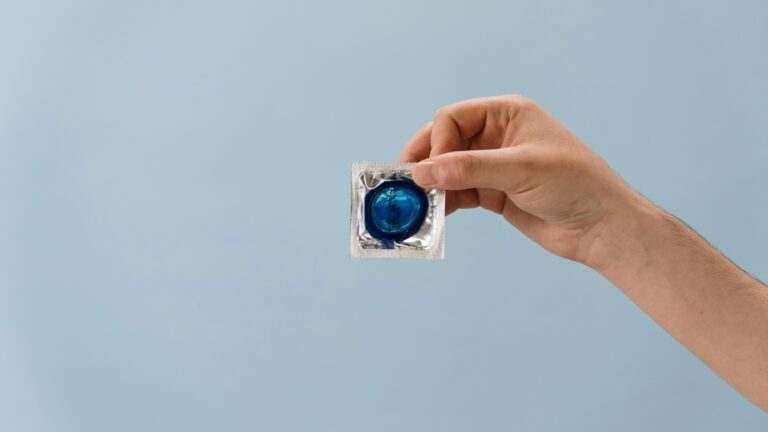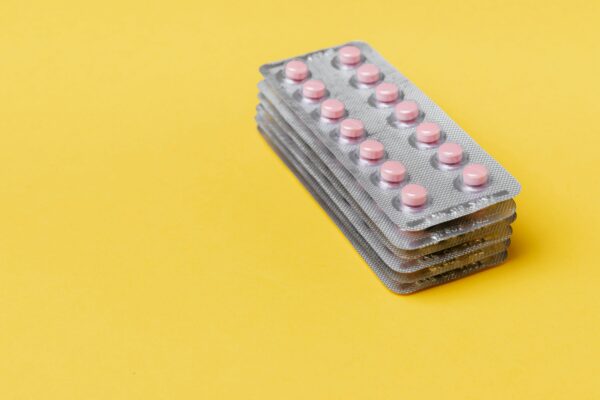Using condoms correctly is essential for safe sexual experiences, preventing sexually transmitted infections (STIs), and avoiding unplanned pregnancies. This guide provides a detailed, step-by-step approach to using a condom, covering essential tips, precautions, and common questions. Let’s ensure you have all the information needed for a secure and enjoyable experience.
- Why Condoms Are Important for Sexual Health
- Step-by-Step Guide: How to Properly Put on a Condom
- Step 1: Check the Expiration Date and Packaging
- Step 2: Open the Package Carefully
- Step 3: Identify the Right Side of the Condom
- Step 4: Pinch the Tip of the Condom
- Step 5: Roll the Condom Down the Shaft
- Step 6: Check for Proper Fit and Comfort
- Step 7: Apply Lubrication
- Step 8: After Ejaculation, Hold the Base While Withdrawing
- Step 9: Carefully Remove and Dispose of the Condom
- Common Mistakes to Avoid When Using Condoms
- Types of Condoms Available
- Benefits and Drawbacks of Using Condoms
- FAQs: How to Put on a Condom
- Question: How do I know if a condom is expired?
- Question: Can I open the condom package with scissors?
- Question: How much space should I leave at the tip of the condom?
- Question: What should I do if the condom doesn’t roll down easily?
- Question: Can I use any lubricant with a condom?
- Question: Is it safe to use two condoms for extra protection?
- Question: What should I do if a condom breaks during sex?
- Question: Can I reuse a condom?
- Question: What should I do if a condom breaks?
- Question: Are there different condom sizes?
- Question: How effective are condoms in preventing pregnancy and STIs?
Why Condoms Are Important for Sexual Health
Condoms are one of the most effective barriers against STIs and are highly recommended by healthcare providers. They’re designed to block bodily fluids, thus reducing the risk of infection and pregnancy. Condoms also promote a sense of responsibility and respect for both you and your partner’s health.
Step-by-Step Guide: How to Properly Put on a Condom
Step 1: Check the Expiration Date and Packaging
Always check the expiration date on the condom’s packaging. Using an expired condom increases the risk of tearing due to deterioration of the material. Ensure that the package is intact, with no visible damage, tears, or signs of tampering. If the condom package seems compromised, use a new one.
Step 2: Open the Package Carefully
Use your hands, not sharp objects, to open the condom package. Gently tear it open at the edge, avoiding fingernails or teeth that could damage the condom. A damaged condom will not be effective in protecting against STIs or pregnancy.
Step 3: Identify the Right Side of the Condom
Determine which side is the outside of the condom. Pinch the tip of the condom to ensure no air is trapped, and position it on the head of the penis with the rolled side facing outward. Rolling the condom the wrong way can cause discomfort and reduce effectiveness.
Step 4: Pinch the Tip of the Condom
Pinch the small reservoir tip at the top of the condom to remove any air. This reservoir area is essential for collecting semen during ejaculation, and pinching it ensures the condom fits snugly and comfortably.
Step 5: Roll the Condom Down the Shaft
Once the condom is positioned correctly, roll it down to the base of the penis. Smooth out any air bubbles, as these can increase the risk of breakage. The condom should fit snugly but comfortably along the entire length of the penis.
Step 6: Check for Proper Fit and Comfort
A properly fitted condom should feel secure without being overly tight or loose. Using a condom that’s too tight may lead to discomfort, while a loose one can slip off during intercourse. Many types of condoms come in different sizes, so consider your options if you find the fit is consistently too tight or too loose.
Step 7: Apply Lubrication
Using a water-based or silicone-based lubricant can make sexual experiences more comfortable and reduce the risk of the condom breaking. Avoid oil-based lubricants such as lotions, petroleum jelly, or cooking oils, as these can deteriorate latex condoms and lead to tearing.
Step 8: After Ejaculation, Hold the Base While Withdrawing
After ejaculation, it’s crucial to hold the base of the condom while withdrawing the penis from your partner to prevent the condom from slipping off. Withdrawal should happen immediately after ejaculation while the penis is still erect to avoid any spillage.
Step 9: Carefully Remove and Dispose of the Condom
Slide off the condom without spilling any semen. Wrap it in tissue or paper, and dispose of it in a trash bin. Do not flush condoms down the toilet, as they can cause plumbing issues and harm the environment.
Common Mistakes to Avoid When Using Condoms
- Using an Expired Condom: Expired condoms are more likely to break, increasing the risk of STIs and pregnancy.
- Opening the Package with Sharp Objects: Avoid using scissors, knives, or teeth to open the condom package.
- Not Pinching the Tip: Failure to pinch the tip can lead to air bubbles that may cause the condom to burst.
- Using Oil-Based Lubricants with Latex Condoms: Oil-based lubricants degrade latex, leading to potential breakage.
- Putting the Condom on Inside-Out: Rolling the condom on incorrectly reduces comfort and effectiveness.
Types of Condoms Available
There are several types of condoms to choose from based on material, size, and texture. Choosing the right type can enhance comfort and pleasure while ensuring safety.
Latex Condoms
The most common type, latex condoms are highly effective when used correctly. However, they should not be used with oil-based lubricants as these can weaken the latex.
Polyurethane Condoms
For those allergic to latex, polyurethane condoms provide an excellent alternative. They’re thinner and more heat-sensitive than latex, though they’re slightly more expensive.
Lambskin Condoms
Made from natural lambskin, these condoms are effective against pregnancy but do not protect against STIs due to their porous nature. They’re recommended only when STI prevention is not a concern.
Textured and Ultra-Thin Condoms
Textured or ultra-thin condoms can enhance sensitivity and pleasure. They’re available in various designs to suit different preferences, though they still require proper handling to prevent breakage.
Benefits and Drawbacks of Using Condoms
Benefits
- Protection Against STIs and Pregnancy: Condoms provide a barrier against both STIs and unintended pregnancies, making them a reliable contraceptive method.
- Ease of Access and Affordability: Condoms are widely available, affordable, and don’t require a prescription, making them accessible for most individuals.
- Minimal Side Effects: Unlike hormonal contraceptives, condoms have no significant side effects.
Drawbacks
- Possible Allergies: Some individuals experience allergies to latex or lubricants used with condoms, though alternatives are available.
- Reduced Sensitivity: Certain individuals may find that condoms reduce sensitivity, though ultra-thin options are available to address this concern.
- Risk of Breakage with Improper Use: Condoms are only effective if used correctly, as improper handling or inadequate lubrication can lead to breakage.
FAQs: How to Put on a Condom
Question: How do I know if a condom is expired?
Check the expiration date printed on the condom package. Using an expired condom increases the risk of breakage, making it less effective for protection.
Question: Can I open the condom package with scissors?
It’s best to avoid scissors, teeth, or sharp objects to prevent damaging the condom. Gently tear the package open with your hands along the edge.
Question: How much space should I leave at the tip of the condom?
Pinch the reservoir tip at the top of the condom to leave about a half-inch of space. This space collects semen and helps prevent the condom from breaking during use.
Question: What should I do if the condom doesn’t roll down easily?
If the condom does not roll down smoothly, it may be inside-out. Discard it and use a new condom, as rolling it the other way may compromise its effectiveness.
Question: Can I use any lubricant with a condom?
Only use water-based or silicone-based lubricants with latex condoms. Oil-based products can weaken latex, increasing the risk of breakage.
Question: Is it safe to use two condoms for extra protection?
No, using two condoms at once (double bagging) increases friction, which can lead to tearing. Using a single condom correctly provides the best protection.
Question: What should I do if a condom breaks during sex?
If a condom breaks, stop immediately and consider using emergency contraception if pregnancy is a concern. It’s also advisable to consult a healthcare provider regarding STI testing.
Question: Can I reuse a condom?
No, condoms are designed for single use only. Reusing a condom increases the risk of breakage and reduces effectiveness.
Question: What should I do if a condom breaks?
If a condom breaks during intercourse, withdraw immediately and consider emergency contraception to prevent pregnancy. It’s also advisable to consult a healthcare provider regarding STI testing.
Question: Are there different condom sizes?
Yes, condoms come in various sizes to ensure a comfortable and secure fit. Using a correctly sized condom reduces the chances of breakage and slippage.
Question: How effective are condoms in preventing pregnancy and STIs?
When used correctly, condoms are about 98% effective in preventing pregnancy and provide a strong barrier against STIs. Proper usage is essential for maximum effectiveness.
How to Fix Premature Ejaculation: Effective Solutions for Men



![How long can the average man stay erect [and how to stay longer]](https://maletestosteronebooster.com/wp-content/uploads/2022/04/how-long-average-erection-600x400.jpg)

